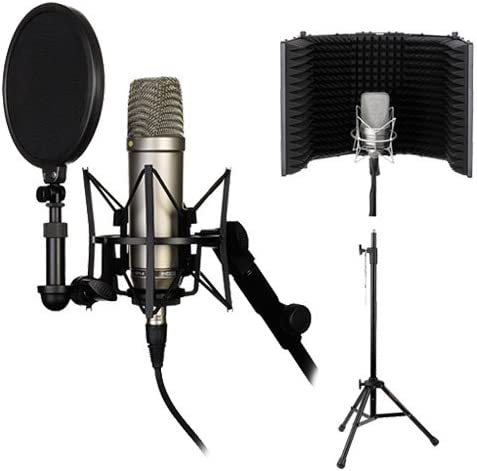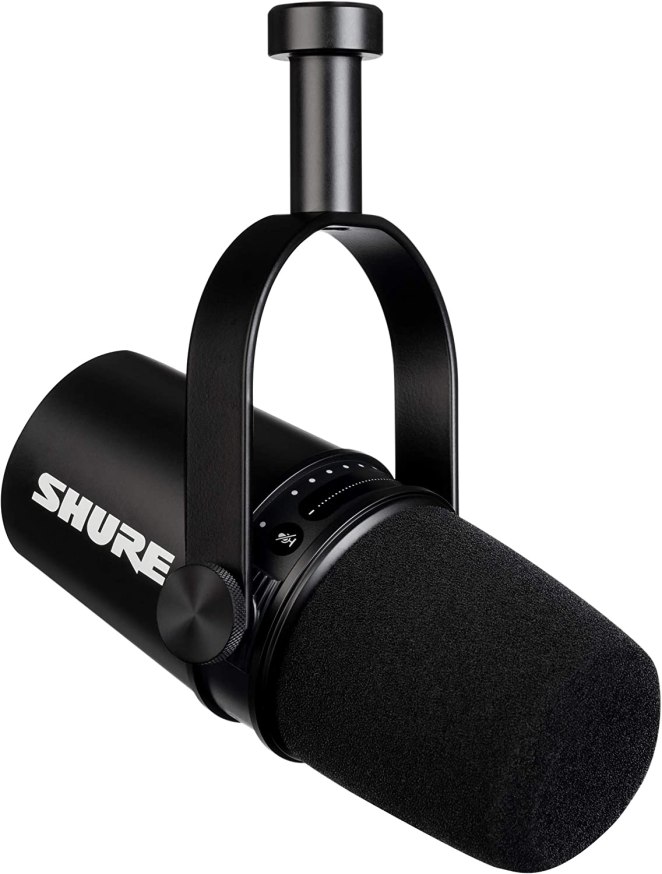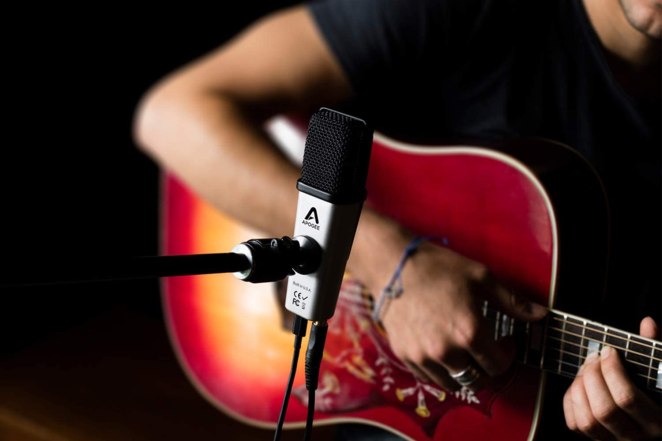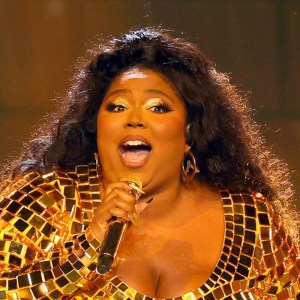When you buy through our links, we may earn an affiliate commission.
Upgrading your home recording studio is a great way to enhance your recordings. With a new studio mic, you can be more picky this time around with your vocal or instrument recordings.
Some mics pay greater attention to certain kinds of sounds -- soft vocals and powerful voices. And some recording microphones are best suited for a variety of instruments ranging from acoustic guitars and drum overheads.
We'll dive into various types of microphones and will go over factors such as polar pattern, connectivity, and frequency response.
With the right microphone, you can capture the audio quality that'll make all the difference when mixing and mastering.
Our favorite mic overall is the Audio Technica AT2020, it's affordable, versatile, and reliable. Use it for all of your creative projects.
Here are 6 of our favorite studio mics for recording.
Quick Summary of the Best Studio Mics
- Audio-Technica AT2020 (Best Budget Mic for Home Recording)
- Neumann U 87 (Best High-End Mic)
- Rode NT1-A (Best Mic Kit Under $350)
- Shure MV7 (Best USB/XLR Combo)
- Apogee MiC Plus (Best for Mobile Recording)
- AKG Pro Audio C414 (A Quality Studio Mic Under $1,100)
Best Studio Microphones for Recording
1. Best Budget Mic for Home Recording – Audio-Technica AT2020

SPECS
- Mic Type & Pattern: Condenser, cardioid
- Frequency Response: 20 Hz to 20 kHz
- Connectivity: XLR (USB option available too)
Audio Technica is the best in the game for affordable quality mics. Their AT2020 gets lots of praise, and the hype is real. Audio Technica's AT2020 is one of the best for good reason; it has a wide frequency response, making the audio accurate and crisp.
The mic has the perfect pattern for capturing audio (cardioid) and is durable and rugged, so it'll withstand the demands of studio use. It'll make a great mic for beginners.
Overall, it's the best microphone for vocals if you are on a budget. There's a USB mic available if you're looking to plug a mic into your laptop.
It's the best mic for under $100, so if you don't want to sacrifice quality, consider the AT2020.
Want to Learn About Microphones? Read More About Condenser Microphones Here
2. Best High-End Mic – Neumann U 87

SPECS
- Mic Type & Pattern: Condenser, omnidirectional, cardioid, and figure 8
- Frequency Response: 20 Hz to 20 kHz
- Connectivity: XLR
Top-tier studio mics aren't cheap, so if you can afford to splurge on a new studio mic, make sure it's a mic you're going to absolutely love. We'll think you'll be a huge fan of this mic, though.
The sound quality is unbelievable, it has a large-diaphragm design to capture the finest of details for a smooth and accurate sound. You can record vocals and even some instruments as well.
The 10dB attenuation switch enables the U 87 to handle sound levels up to 127dB without distortion. Switch the mic pattern to omnidirectional to capture your acoustic guitar or to figure-8 for duets.
This mic is an industry favorite, and your favorite artists are likely recording with this mic as well. If you're ready to level up with a sound quality that sounds professional, you'll want to consider the U 87.
3. Best Mic Kit Under $350 – Rode NT1-A

SPECS
- Mic Type & Pattern: Condenser, cardioid
- Frequency Response: 20 Hz to 20 kHz
- Connectivity: XLR
If you're starting your home studio from scratch, consider getting a mic kit or bundle. This mic comes from Rode, which is a great microphone brand known for smooth and balanced sound.
Their NT1-A has a great frequency response and low-self noise for clear audio without unwanted noise.
It comes with an acoustic reflection filter and tripod mic stand. The filter minimizes room reflection to focus on your vocals, and the stand will make recording so much easier, allowing you to be more flexible while recording.
We love that the stand is adjustable, so put it on a table, desk, or the ground. Do whatever is comfortable for you.
The mic is pretty versatile; it'll do a great job capturing instruments and will also be a great pick for podcasting and voiceover work.
4. Best USB/XLR Combo – Shure MV7

SPECS
- Mic Type & Pattern: Dynamic, cardioid
- Frequency Response: 50 Hz to 16 kHz
- Connectivity: USB & XLR
If you can't decide between a USB or XLR mic, consider the MV7 from Shure. The mic is a dynamic mic, which technically isn't our first choice for vocals, but a dynamic mic will definitely come in handy for those with intense, powerful vocals. A dynamic mic will also be a great pick for capturing instruments as well.
The mic is still one of the best, and Shure created a wonderful mic for musicians and creatives to use for years. Take it on the go and use the USB connectivity or use an audio interface or mixer for a professional setup at home or in the studio.
The mic uses voice isolation technology to reduce unwanted background noise. It's also a super sturdy mic, which Shure is known for. Their mics are basically superhero strong, seriously. It's hard to break a Shure mic from a drop.
Overall, it's really convenient to have a mic with dual connectivity. It's user-friendly and wonderful in various recording situations.
We like it for podcasting and meetings, so take advantage of the USB connectivity for recording outside of music.
5. Best for Mobile Recording – Apogee MiC Plus

SPECS
- Mic Type & Pattern: Condenser, cardioid
- Frequency Response: 20 Hz to 20 kHz
- Connectivity: USB
The Apogee MiC is a really unique mic for musicians needing a portable mic. This small mic offers professional-level audio recording and is super easy to use and take along anywhere.
It's compact and connects directly to your laptop or iOS device (iPad, iPhone) through USB and lightning cable. The mic is also great for podcasters, actors, and content creators.
It has a wide dynamic range for capturing vocals or acoustic instruments, from soft vocals to drums.
The mic has a great build and is made to last. Pack it in your carry-on for recording on the go. No configuration is needed; just plug and play.
The mic has made music production simple for iPhone and iPad users, so if your home studio is brand new, this is a great pick. You have to start somewhere.
6. A Quality Studio Mic Under $1,100 – AKG Pro Audio C414

SPECS
- Mic Type & Pattern: Condenser, cardioid, omnidirectional, figure-8, and more
- Frequency Response: 20 Hz to 20 kHz
- Connectivity: XLR
The C414 is one of the best professional mics for under $1,100. It's not as pricey as a nostalgic mic like the U 87, but it's still a wonderful high-end mic for capturing vocals and instruments with lots of detail and no distortion.
The mic has 9 polar patterns (5 patterns, 4 intermediate settings), so you're getting a lot of flexibility here for the type of recording you'll be doing.
So whether you're recording with 2-3 people or recording instruments, this mic is ready to respond to different sources and environments for the best audio quality. Blend patterns for the best pattern for your vocals and guitar.
The microphone also features three switchable bass-cut filters to eliminate wind noise, vibration, and proximity effects for clear audio.
Engineers and producers love this mic. It has an all-metal, die-cast body that's scratch-resistant. That's exactly what you want in a quality mic. It's a mic held in high regard by the industry.
Best Studio Mic Buyer's Guide
Picking out your next studio mic is simple if you keep the following in mind: mic type, polar patterns, frequency response, and connectivity.
You want to make sure your mic has a pattern meant to pick up vocals or instruments if you'll be recording with your guitar or drums.
You'll also want to make sure it's compatible with your setup. (laptop or audio interface/mixer).
Microphone Type
Three common mic types include dynamic microphones, condenser microphones, and ribbon microphones. Dynamic microphones are ideal for capturing loud, powerful vocals, drums, and electric guitars.
Condenser microphones are sensitive and attentive to detail, making them best for vocals and acoustic instruments.
Ribbon mics offer a vintage sound and are used for warm and smooth recordings.
Polar Patterns
Common polar patterns include cardioid, omnidirectional, figure-eight, and multi-pattern.
Cardioid microphones pick up sound from the front and reject noise from the sides and rear, making them great for recording vocals and instruments.
Omnidirectional microphones capture sound from all directions, ideal for capturing room ambiance.
Figure-eight microphones capture sound from the front and back, useful for capturing duets or interviews.
Multi-pattern microphones offer flexibility by allowing you to switch between various polar patterns.
Frequency Response
A microphone with a smooth and extended frequency response in the mid and high ranges is great, look for 20 Hz to 20 kHz.
Sensitivity and Self-Noise
Higher sensitivity means the microphone can capture softer sounds, while lower sensitivity may be suitable for louder sources.
It's important to choose a microphone with low self-noise to ensure clean recordings.
Build Quality and Durability
A mic with robust construction and quality materials that can withstand regular use and potentially harsh conditions.
Connectivity and Compatibility
Most studio microphones use XLR connectors, which require an audio interface or mixer with XLR inputs. Some microphones also offer USB connectivity, which is great if you want a "plug-and-play" setup for your laptop. It's convenient for home studios.
Frequently Asked Questions (FAQs)
What is the best polar pattern for recording vocals?
Cardioid is best if you're performing solo. They will capture your audio and reject noise from the sides and rear.
Can I use a studio microphone with a USB connection directly to my computer?
Yes, but the audio quality is typically much better with an XLR mic and pro audio interface. However, if you're short on space and need to budget for home recording, you can find USB mics easily for under $100 to use with your laptop.
There are also some great home recording packages available that will get you started with everything you need to get your home studio off the ground.
Do I need a shock mount or pop filter for my studio microphone?
Yes, if you want to minimize plosive sounds ("p" and "b") you'll like having a pop filter. A shock mount helps reduce vibrations. Basically, if you want your audio to be as clear and professional as possible, consider both accessories.
What is phantom power and do I need it for my microphone?
Phantom power is a DC voltage (usually 48 volts) supplied to condenser microphones through an audio interface or mixer. Most condenser mics need phantom power.
Conclusion
There are so many amazing studio mics out there for musicians, podcasters, and voice actors. If you're on a budget, take a look at your connectivity options and buy an Audio Technica AT2020 according to that. This is especially a great option if you're on a budget.
If you're ready to level up with industry-standard mics, consider the Neumann U 87 or AKG C414. Both are top-quality mics made to capture audio much better than beginner-friendly mics. These mics give you more flexibility with patterns and can reduce background noise and distortion on a different level.
For those looking for a budget-friendly bundle, we recommend the Rode NT1-A mic kit. It comes with a stand and filter to make recording simple. And if you're looking to produce music from your iPhone, iPad, or laptop, we think you'll like the Apogee mic. It's user-friendly and easy to travel with.
Photo Courtesy Amazon
